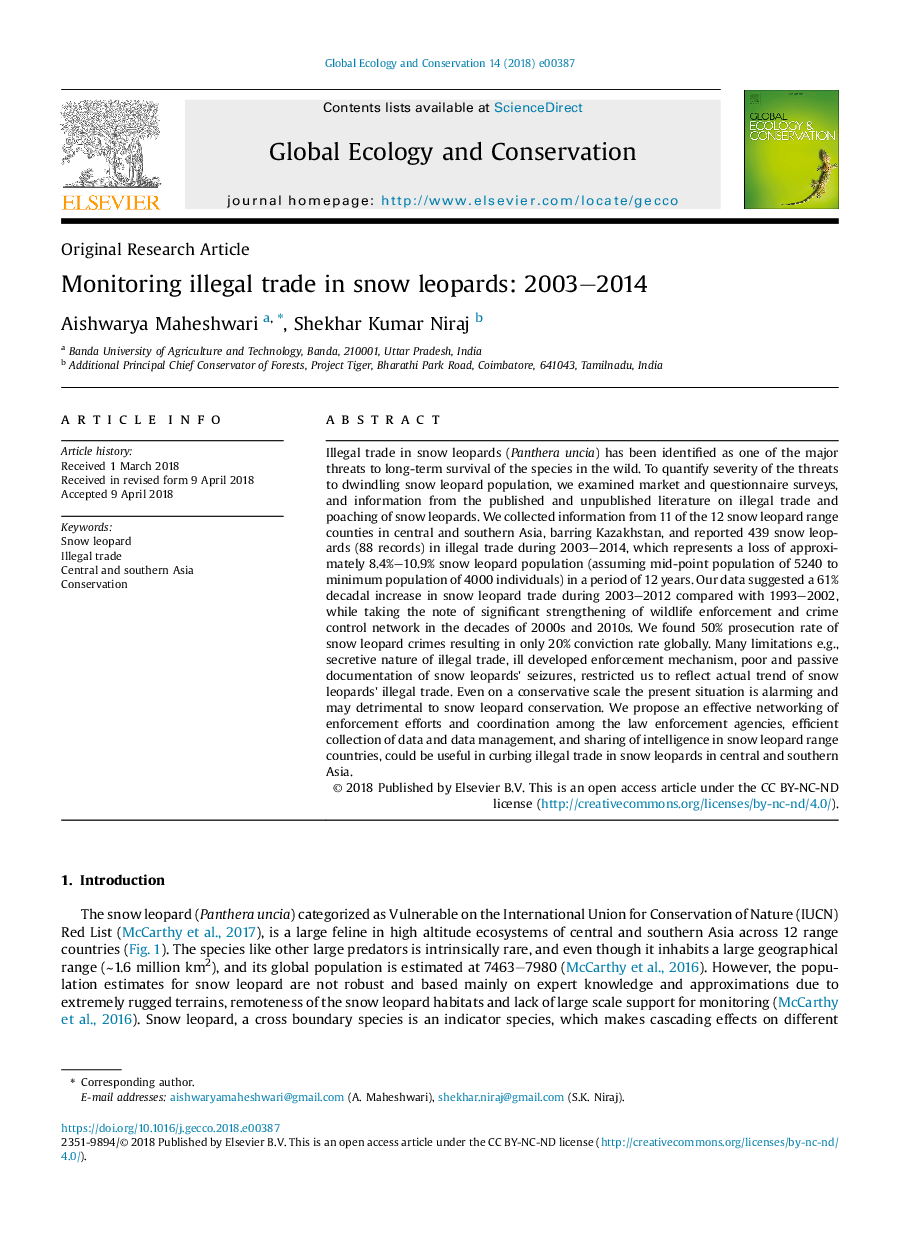| Article ID | Journal | Published Year | Pages | File Type |
|---|---|---|---|---|
| 8846232 | Global Ecology and Conservation | 2018 | 6 Pages |
Abstract
Illegal trade in snow leopards (Panthera uncia) has been identified as one of the major threats to long-term survival of the species in the wild. To quantify severity of the threats to dwindling snow leopard population, we examined market and questionnaire surveys, and information from the published and unpublished literature on illegal trade and poaching of snow leopards. We collected information from 11 of the 12 snow leopard range counties in central and southern Asia, barring Kazakhstan, and reported 439 snow leopards (88 records) in illegal trade during 2003-2014, which represents a loss of approximately 8.4%-10.9% snow leopard population (assuming mid-point population of 5240 to minimum population of 4000 individuals) in a period of 12 years. Our data suggested a 61% decadal increase in snow leopard trade during 2003-2012 compared with 1993-2002, while taking the note of significant strengthening of wildlife enforcement and crime control network in the decades of 2000s and 2010s. We found 50% prosecution rate of snow leopard crimes resulting in only 20% conviction rate globally. Many limitations e.g., secretive nature of illegal trade, ill developed enforcement mechanism, poor and passive documentation of snow leopards' seizures, restricted us to reflect actual trend of snow leopards' illegal trade. Even on a conservative scale the present situation is alarming and may detrimental to snow leopard conservation. We propose an effective networking of enforcement efforts and coordination among the law enforcement agencies, efficient collection of data and data management, and sharing of intelligence in snow leopard range countries, could be useful in curbing illegal trade in snow leopards in central and southern Asia.
Related Topics
Life Sciences
Agricultural and Biological Sciences
Ecology, Evolution, Behavior and Systematics
Authors
Aishwarya Maheshwari, Shekhar Kumar Niraj,
